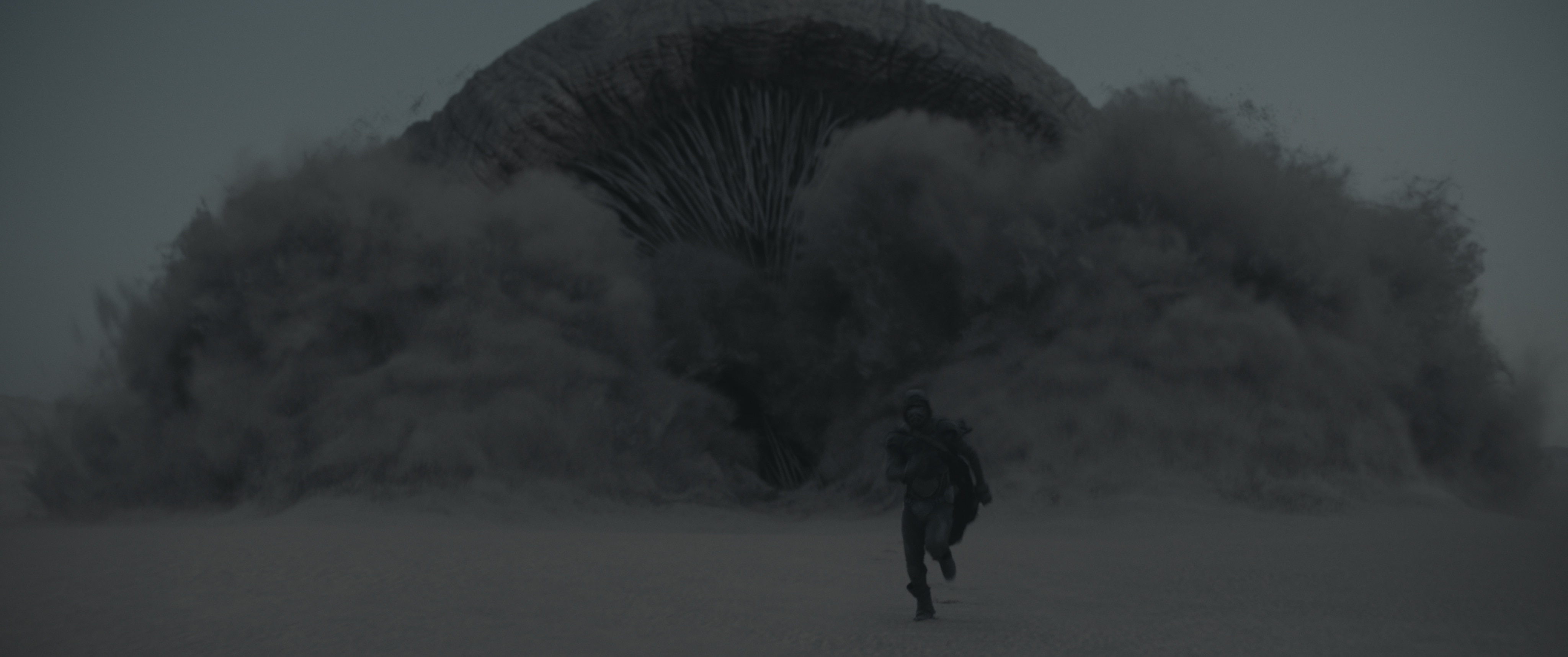Create a free profile to get unlimited access to exclusive videos, sweepstakes, and more!
Dune had a 'whale' of an idea when figuring out how to bring the sandworms to life
It's basically a gigantic, sandy super-whale.

Frank Herbert's Dune is such a seminal text it's gone on to inspire several other pillars of pop culture, including mega-franchises like Game of Thrones and Star Wars. In the case of the latter, Star Wars creator George Lucas was such a big fan that the Sarlacc creatures found in Return of the Jedi are actually based on the sandworms found in Herbert's iconic series, with the The Mandalorian's second season possibly even drawing on them as inspiration for the "Krayt Dragon" found on the planet Tatooine.
So when it came to time to design the sandworms for the now-released film adaptation of Dune, director Dennis Villeneuve (Arrival) had to figure out how he was going to capture this vital part of the novel without threading on any ground in a galaxy far, far away that science fiction and fantasy fans would be more than familiar with. For inspiration, he and visual effects supervisor Paul Lambert turned to mother nature itself — or more specifically, whales.
According to Wired, this would give the sandworms a more "prehistoric" look that would make all the visuals feel more realistic, natural, and organic. As a result, the sandworms were designed to have mouths full of baleen (the feeding filtering system in the mouth of whales), and to move like them under the sand, even following subterranean sounds, somewhat like whales do with sonar. (The whales themselves were built digitally, using a trio of software systems to give them their rough, scaly texture and their slow-graceful movement.
"Obviously, there’s such a big fan base on Dune that if you go on the internet—Google, like, ‘Dune sandworm’—there's so many different versions," says production designer Patrice Vermette, who spent months trying to figure out how the sandworms would work, including their size, weight, as well as how strong they'd be to travel through the sand that covers their home world of Arrakis. "And Dune has been such an inspiration for a lot of science fiction lovers and movies that have been made. In Star Wars there’s a sandworm. So, we wanted to do something quite original, and terrifying.”
With whales as the template for the sandworm's movement, this allowed the movie's sound team to figure out how to come up with how they'd sound, and how it would impact the world around them. Given their weight and size, sound designers Mark Mangini and Theo Green (Blade Runner 2049) decided that the people living in the desert of Arrakis (AKA the Fremen) would would be able to hear them coming. But it also means they can use the sandworms' ability to track and follow sound against them, by distracting them with "thumpers" that hit the ground's surface constantly.
"Something I’ve noticed about Denis is that he has never once given me something from another movie as a reference," says Green. Mangini adds that Villeneuve used other movies as examples of what not to do, so that the sandworms would be more original. He also wanted people revere them when they first appeared on screen, instead of the more obvious feeling (fear). Rather, Villeneuve stated, "It's more god than Godzilla."
Dune is currently available to stream on HBO Max and in theatres all over the country.


























